SNEP Newsletter and Articles
The Southeast New England Program produces a monthly newsletter that highlights innovative approaches to common environmental challenges throughout the SNEP region as well as various projects throughout the region that are ongoing or recently completed. Our articles are archived on this page and can be searched by keyword. Click here to view past newsletters.
Don't want to miss out? Register for our newsletter, today!
From Cesspools to Septic; Lawns to Rain Gardens: Moving Forward to Reduce Nitrogen Pollution in Charlestown, RI
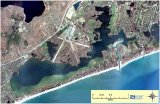
October 2021 - Today, communities across the U.S. are trying to figure out the best way to manage septic systems, also called on-site wastewater treatment systems, to reduce nutrient loading into watersheds. In the town of Charlestown, RI, nitrogen (N) inputs from these systems are a continuing problem, putting three important coastal salt ponds at risk. The primary source of nitrogen pollution can be traced to septic systems in seven highly populated zones in town. Mitigation efforts have been in place since 1994 when a Wastewater Management District was established to properly manage all septic systems. In 2004, the Town required removal of all cesspools and the upgrade of failing systems to manage bacteria issues, and by 2016 most cesspools had been replaced with septic systems. However, recent sampling by Charlestown showed highly elevated nitrate (NO3) levels in the groundwater in its more populated coastal areas. This nitrogen- rich ground water eventually flows into the three salt ponds causing eutrophication and impairing water quality. Nitrogen pollution coming from ground water and stormwater lead to hypoxic conditions, cyanobacteria blooms, and reduced water clarity in the ponds, which all impact the local economy through mandated closure of ponds to shellfishing and swimming due to high bacteria levels. Read From Cesspools to Septic; Lawns to Rain Gardens: Moving Forward to Reduce Nitrogen Pollution in Charlestown, RI.
Blooming but Not Beautiful: Addressing Harmful Algal Blooms in Southeast New England
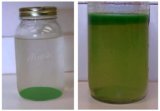
October 2021 - On September 14, 2021, the Southeast New England Program hosted our most recent webinar titled "Blooming but Not Beautiful: Addressing Harmful Algal Blooms (HABs) in Southeast New England." During this webinar, our panelists Don Anderson and Di Jin of the Woods Hole Oceanographic Institution (WHOI), Corey Conville of the U.S. EPA New England Regional Lab, and Shasten Sherwell of USEPA SNEP provided an overview of the challenges of estuarine and freshwater HABs in the SNEP region. This article is a summary and continuation of that discussion. Read Blooming but Not Beautiful: Addressing Harmful Algal Blooms in Southeast New England.
Not All Heroes Wear Capes: SNEP is Making Regional Environmental Data Plans

October 2021 - Among the many pressing environmental needs, data management is an unlikely hero. Problems like sea level rise and invasive species more often demand our attention. Quietly, and in the background, environmental data document the long arc of changes in the ecosystems we inhabit and help us take actions to be better stewards. The Southeast New England Program (SNEP) has been working to bring together the region's siloed strategies and disparate datasets. SNEP is working to establish a Regional Monitoring Framework Synthesis to provide a long-term understanding of the health and issues facing the region's ecosystems to support a shared, informed, and coherent approach to environmental management. No cape or spandex suit needed. Read Not All Heroes Wear Capes: SNEP is Making Regional Environmental Data Plans.
Wetlands and Seagrasses: Nature's Superheroes in the Fight for Coastal Resilience
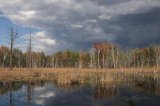
September 2021 - On July 15, the Southeast New England Program hosted "Wetlands and Seagrasses: Nature's Superheroes in the Fight for Coastal Resilience in Southeast New England," which welcomed Dr. Phil Colarusso, an EPA marine biologist; Dr. Rachel Jakuba of the Buzzards Bay Coalition; Caitlin Chaffee of the Narragansett Natural Estuarine Research Reserve (NERR); and David Morgan, a SNEP ORISE Fellow; as they each presented on their work related to the restoration and protection of wetlands and eelgrasses, and the species that depend on them. Read Wetlands and Seagrasses: Nature's Superheroes in the Fight for Coastal Resilience.
A Not-So-Distant Future: Pushing the Ball Forward on I/A Septic Systems
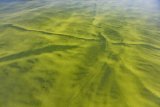
September 2021 - On June 2, 3, and 10, EPA's Southeast New England Program (SNEP) and the Atlantic Coastal and Environmental Sciences Division (ACESD) at the Office of Research and Development (ORD) hosted a three-day workshop on innovative and alternative (I/A) septic systems titled "Developing and Evaluating Promising Technologies: Pushing the Ball Forward on I/A Septic Systems." The presentations, key breakout session discussion points, and a summary report, are now available to the public on the SNEP website. Read A Not-So-Distant Future: Pushing the Ball Forward on I/A Septic Systems.
Municipal Codes for Minimal Development Impacts: "Still Kind of a Mystery"
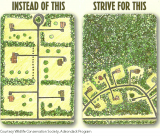
September 2021 - Undeveloped lands are more than open spaces begging for development; they are working landscapes that with proper measures can mitigate human impacts by providing the ecosystem services we depend upon: maintaining water quality, soaking up carbon, preserving a sense of place, and sustaining habitats and communities. Keeping open spaces open, however, is often hampered by conventional building and zoning codes that make it easier to clear new land for development than to reuse, retrofit, or fill in already developed lands. New research in the SNEP region focuses on the disincentives for maintaining open space. Read Municipal Codes for Minimal Development Impacts: "Still Kind of a Mystery".
Coastal Resilience and Climate Finance in Bourne, Massachusetts
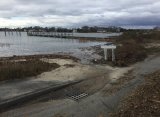
September 2021 - Bourne, Massachusetts is the first town on the Cape Cod peninsula. And with 55 miles of coastline, Bourne is particularly vulnerable to climate risks. Town officials have long been aware of Bourne's precarious position. The Town already experiences flooding during rainy days and moon tides, and floodplain management tools show a dire forecast. Water quality—identified as the biggest issue in the Town's Local Comprehensive Plan—was predicted to get worse with increased flooding and sea-level rise. Like many towns of its size, Bourne described itself as "plan-heavy" but not "action-heavy." Town leaders often felt overwhelmed by how to take the next steps towards climate resilience. Read Coastal Resilience and Climate Finance in Bourne, Massachusetts.
Follow-Up: Addressing Stormwater Management through Community-Drive Green Infrastructure Design

June 2021 - On Wednesday, April 28th, 2021 SNEP hosted a webinar on "Addressing Stormwater Management through Community-Driven Green Infrastructure Design". Presenters included Mark Voorhees with EPA Region 1, Stacey Eriksen with EPA Region 8, Kelly Boling with the Trust for Public Land, and Kate England with the MA Department of Conservation and Recreation. This article provides a recap and continuation of that discussion. Read Addressing Stormwater Management through Community-Drive Green Infrastructure Design.
Seeking Refuge on a Changing Planet: Figuring Out Where to Go
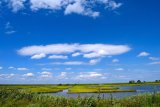
June 2021 - Landscapes shift and ecosystems move; the world we inhabit is in flux. Anticipating likely changes is deeply important work for ecological restoration and climate adaptation planning. SNEP-funded research by ORISE Research Fellow David Morgan is investigating how climate change may affect restoration practices in the future; and how knowledge of that impact could contribute to better climate resilience practices. More specifically, Morgan is looking into "stepping-stone" refugia — pockets of climate stability that provide refuge to various species as they adapt to their changing environments by shifting their ranges. Read Seeking Refuge on a Changing Planet: Figuring Out Where to Go.
Jump in? Not so Fast! Impact of Cyanobacteria Blooms on Recreational Waters
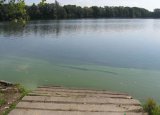
June 2021 - Summer is fast approaching and with the warm weather it is time to hit the water! Clean water and access to safe waterbodies play an important role in our communities. They enable individuals of all ages to have fun while also improving mental and physical health, strengthening social bonds, and boosting local economies. In addition to providing recreational use, waterbodies often carry strong cultural and spiritual value for many communities. For many indigenous communities, local waterbodies are sacred places that must be preserved and protected. To others, places near the water serve as a meditative place where they can reconnect with nature. Read Jump in? Not so Fast! Impact of Cyanobacteria Blooms on Recreational Waters.
Follow-Up: The Nexus of Restoration and Economy for Local Aquaculture in Southeast New England

April 2021 - Aquaculture can be a sensitive subject depending on who you talk to. If done poorly, near-shore aquacultural products, like oysters, risk over-saturating a niche market and threaten the livelihoods of local shellfishermen. If done right, aquaculture may be a catalyst to develop new expanded markets and provide an additional tool to address widespread nutrient pollution and sequester carbon across southeastern New England. Read Follow-Up: The Nexus of Restoration and Economy for Local Aquaculture in Southeast New England.
Retrofitting Historic Urban Development to Reduce Stormwater Runoff

April 2021 - To assist communities with the implementation of stormwater management on existing urban developments, the UNH Stormwater Center in collaboration with the SNEP Network, state agencies, and EPA Region 1, is currently working to develop a Stormwater Retrofit Manual. Our previous issue highlighted ongoing SNEP-funded work that allows municipalities to incorporate stormwater management and planning into future urban design plans. Read Retrofitting Historic Urban Development to Reduce Stormwater Runoff.
Re-Zapping the Blackstone: Keeping the River Recovery Going!
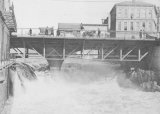
April 2021 - The Narraganset Bay Estuary Program, with funding from SNEP, is working to develop a needs assessment for the Blackstone River watershed. The goal of this project is to convene a diverse group of local stakeholders to identify and prioritize the needs of the watershed, and to increase human capacity through collaboration with groups in and around the Blackstone River watershed. Read Re-Zapping the Blackstone: Keeping the River Recovery Going!.
Not Stepping in the Same River Twice: Making Strides in Ecological Restoration through Dam Removal

February 2021 - Dams are still prevalent throughout the United States, however, much of this infrastructure is aging beyond its usable life. Though beneficial in a few ways, dams can have significant adverse effects on local ecosystems, which has led to a trend of dam assessment, retirement, and removal in the SNEP region and throughout the United States. Read Not Stepping in the Same River Twice: Making Strides in Ecological Restoration through Dam Removal.
Getting to Resilience: SNEP's Strategic Plan for Restoration and Adaptation in Southeast Coastal New England
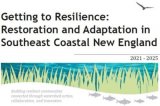
February 2021 - SNEP has drafted and finalized our Strategic Plan, which is now posted to our website. This Plan lays the groundwork for how our Program can achieve our vision of safe and healthy waters, thriving waters and natural lands, and sustainable communities throughout southeast New England by 2050. The Plan also involves detailed priority action for Phase I (2021 - 2025). Read Getting to Resilience: SNEP's Strategic Plan for Restoration and Adaptation in Southeast Coastal New England.
Flow Duration Curves: A New Model to Envision Healthy Watersheds and Resilient Communities
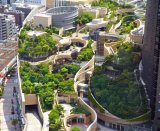
February 2021 - Urban landscapes can struggle with how to deal with stormwater. With so many paved surfaces, it's already difficult to capture, store, treat, and, expel stormwater from city streets. Considering the trajectory of most urban populations, this is a problem that risks getting worse. Unmanaged stormwater can result in increased flooding to urban areas and decreased ecosystem health of nearby waterways due to contaminated runoff. A new project funded by SNEP aims to mitigate these risks by modeling projected stormwater flows and incorporating these models into future planning decisions to assist municipalities in the implementation of adaptive strategies such as those offered through green infrastructure. Read Flow Duration Curves: A New Model to Envision Healthy Watersheds and Resilient Communities.
Targeting Nitrogen Hotspots
![Quashnet River in Cape Cod, MA [Photo Credit: USGS]](/sites/default/files/styles/thumbnail/public/2021-03/targeting-nitrogen-hotspots.jpg?itok=bTfyygPU)
February 2021 - The problem of nitrogen pollution throughout the SNEP region is multi-faceted. Active nitrogen has cumulative downstream effects that can lead to algal blooms, fish kills, and environments with too little oxygen to support healthy ecosystems. In addition to remediating these sources of nitrogen, part of the solution also involves trapping it after it is released. Active nitrogen can travel in groundwater - slow moving underground streams. In collaboration with the U.S. Geological Survey, SNEP is funding work throughout Cape Cod that aims to identify groundwater flows with high concentrations of nitrogen and remediating these areas by installing permeable barriers in the path of the groundwater flow, which convert active nitrogen to its inactive form as it passes through. Read Targeting Nitrogen Hotspots.
Winter is Coming! And with it, tons of salt on our roads

November 2020 - Road salt, while necessary to prevent icy roads, can be environmentally damaging. In this article, we examine new technologies and housekeeping that limit the environmental impacts of road salt or replace it completely. Read Winter is Coming! And with it, tons of salt on our roads.
What Gets Measured Gets Managed: How EPA is Helping to Reduce Food Waste

November 2020 - Our last issue introduced the problems of food waste. In this issue, we examine solutions by detailing specific tools available to limit our own waste, especially as we gear up for the holiday season. Read What Gets Measured Gets Managed: How EPA is Helping to Reduce Food Waste.
The Pleasant Bay Alliance: Going Far by Going Together
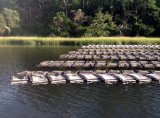
November 2020 - The Pleasant Bay Alliance was created from a shared commitment to nutrient reduction throughout the Cape Cod towns of Brewster, Chatham, Harwich and Orleans. After nearly two decades of working together, the Alliance has quite a lot to show for it. Read The Pleasant Bay Alliance: Going Far by Going Together.
The Stormwater Innovation Center: A Unique Opportunity in an Unlikely Place
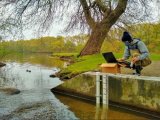
November 2020 - In 2017, the city of Providence, RI was issued a consent decree by the State, which required the construction and maintenance of 42 separate stormwater projects. This blossomed into an unexpected opportunity that inspired the creation of the Stormwater Innovation Center: a Center focused on community outreach, education, and research, with some promising results. Read The Stormwater Innovation Center: A Unique Opportunity in an Unlikely Place.
Agriculture and Aquaculture: Food for Thought

October 2020 - Aquaculture's potential goes well beyond food production, especially in the Southeast New England Program (SNEP) region where it is still a nascent industry reliant on oysters for greatest economic value. According to the Massachusetts Aquaculture Association, aquaculture ranks fifth in value of all agricultural products and is among the state's fastest growing agricultural sectors, with oyster farming alone ranking third in value of all landed seafood in Massachusetts. Beyond their value as food, shellfish (primarily oysters) are also seen as a low-tech nitrogen reduction intervention for waterbodies impaired by nutrients. And aquaculture products like kelp can be used for as low cost, climate efficient, feed for cattle. Read Agriculture and Aquaculture: Food for Thought.
Composting Food Waste: Keeping a Good Thing Going

October 2020 - Food waste is a growing problem in our modern society. Approximately one third of the food produced worldwide never makes it to the table and ends up as waste, occupying around 25% of our ever-shrinking landfills. Commercial composting is a great alternative to the disposal of food waste into landfills. Massachusetts was one of the first states to tackle the issue on a large scale. In 2014 Massachusetts passed a state-wide law to reduce the disposal of commercial organic waste. Read Composting Food Waste: Keeping a Good Thing Going.
Using Phylogenetics for Fecal Source Tracking in the SNEP Region
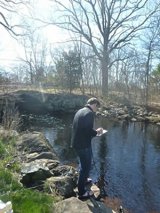
October 2020 - The PhyloChip is a rapid, high throughput, genetic analysis that probes water samples for the 16S rRNA gene. The beauty of using this gene is that its genetic sequence is nearly identical in all bacteria except for small sections of DNA (deoxyribonucleic acid) that can be used to determine the taxonomy (e.g. order, genus, species) of a bacterium. SNEP, along with its partners MassDEP, RIDEM, and EPA New England Regional Lab used this new technology to determine potential sources of fecal contamination in the Palmer River Watershed. Read Using Phylogenetics for Fecal Source Tracking in the SNEP Region.
Sink or Swim: How a diverse Providence community is tackling the unequal racial impacts of climate change in their neighborhoods
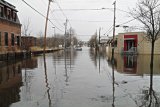
August 2020 - Future climate threats such as more intense storms or sea level rise can all vary in prevalence for a given community; but that community's ability to plan, adapt, and respond to these challenges is limited by its available revenues. In the absence of state or federal assistance, this means that more affluent, and typically whiter, communities will have more resources to adapt and respond to environmental threats than will lower-income communities, which are also more typically communities of color. The Woonasquatucket River Watershed Council recently received a grant to "create a model for engagement, capacity and leadership promotion in vulnerable, underserved neighborhoods in Providence, RI, for the purposes of planning and advocacy around stormwater, flooding, resiliency and sea level rise by those who will be most impacted." Read Sink or Swim: How a diverse Providence community is tackling the unequal racial impacts of climate change in their neighborhoods.
SNEP Network Boosts Support to Southeast New England Communities to Protect and Restore Water Resources

August 2020 - The SNEP Network recently announced its award of direct technical assistance to twelve communities in Rhode Island and southeastern Massachusetts. The Network offers technical assistance and training to communities across the SNEP region to build local capacity and expand sustainable financing opportunities to manage stormwater and undertake watershed management interventions. Read SNEP Network Boosts Support to Southeast New England Communities to Protect and Restore Water Resources.
Designing Climate Change Solutions with Participatory Planning
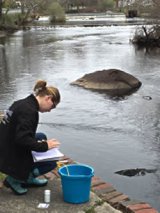
August 2020 - Here in New England, towns deal with many "wicked problems" requiring multiple solutions. Climate change adaptation is proving to be no different. It is complicated and the terms are so varied that a uniform solution will inevitably fail. Members of the Resilient Taunton Watershed Network (RTWN) joined forces in a Southeast New England Program (SNEP)-funded project to respond to climate change with diverse solutions, tailored to specific local needs. Their successes demonstrate how to turn a limitation into an asset by tackling a seemingly intractable issue at scale. Read Designing Climate Change Solutions with Participatory Planning.
Tools to Grow By: Powering Regional Planning with Cool Interactive Tools
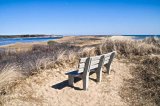
August 2020 - Regional planning can identify solutions that go beyond political boundaries to foster collaboration on resources, infrastructure, and protection of vulnerable special areas, communities, and ecosystems. A unique example in Massachusetts is the Cape Cod Commission (CCC), which is authorized to set regional policies for the Cape and review and decide upon projects likely to pose development issues and have effects in more than one town. The CCC convenes residents and stakeholders alike around critical challenges to plan for the best version of Cape Cod. Its strong intermunicipal coordination and regional infrastructure enables it to protect the unique values and quality of life on Cape Cod by balancing environmental protection and economic progress. Read Tools to Grow By: Powering Regional Planning with Cool Interactive Tools.
EPA's Beach Program: Safe to Swim or Stick to Shoreline?
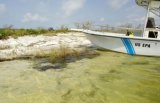
June 2020 - Beachgoers risk falling ill by visiting beaches with polluted water or sand. Stormwater runoff, or water that drains after rainfall, and untreated sewage released into coastal areas can expose visitors to harmful microorganisms called pathogens. To reduce the risk of disease to users of the Nation's marine recreational waters, the Beaches Environmental and Coastal Health Act, or the BEACH Act, was signed into law on October 10, 2000. The Act required EPA to develop performance criteria for testing, monitoring, and notifying public users of possible recreational water problems in order to identify high-risk beaches, mitigate sources of pollution, and better communicate risks to the public. Read EPA's Beach Program: Safe to Swim or Stick to Shoreline?.
Nourishing Ecology and Society with Beachgrass

June 2020 - The largest Atlantic hurricane on record, Hurricane Sandy, required an enormous response. Partners at the national, regional, local, and tribal levels coordinated to help the recovery effort—and often to enhance coastal resilience at the same time. The Wampanoag Tribe of Gay Head (Aquinnah) developed a plan to restore part of their ancestrally important Commonlands by nourishing and stabilizing coastal dunes. The project area included both tribal and municipal lands at Lobsterville Beach in Aquinnah, on Martha's Vineyard. Read Nourishing Ecology and Society with Beachgrass.
Find it and Fix it: Citizen Science Combats Citizen Problems
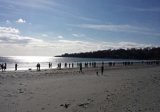
June 2020 - Clean Ocean Access (COA), a Rhode Island-based nonprofit, formed in 2006 after a parking ban restricting beach accessibility stirred two local surfers to contact both Newport Police and City Council. As pipe ruptures and combined sewer overflows took a central role in extending beach closures well into the summer, Marty Grimes and Dave McLaughlin organized 27 other surfers to discuss the importance of water quality in their community. United by their shared interest in maintaining year-round beach accessibility for the public, the group resolved to increase the frequency of local water quality monitoring. Read Find it and Fix it: Citizen Science Combats Citizen Problems.
A Pound of Prevention: Stopping Nitrogen at the Source with Advanced Septic Systems
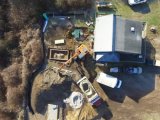
April 2020 - The SNEP-funded Charlestown Coastal Watershed Protection and Restoration Programworks to improve water quality in southeast coastal Rhode Island. The goal is to fund the upgrade of septic systems to incorporate nitrogen-reducing technology—in short, getting the waste out of wastewater. The group works to limit human impacts on the rest of the environment because those ecologies matter to human health and livelihoods. Read A Pound of Prevention: Stopping Nitrogen at the Source with Advanced Septic Systems.
Monitoring Maravista on the Mend: USGS and EPA Study the Effects of Sewering

April 2020 - Since 2016, the US Geological Survey (USGS) has partnered with EPA's Southeast New England Program (SNEP) and Office of Research and Development (ORD) to conduct a unique monitoring effort beneath the Maravista neighborhood, a densely populated coastal peninsula in Falmouth, MA on Cape Cod. The first of its kind in the SNEP region, the Maravista study seeks to track the before-and-after effects of sewering on groundwater quality. Read Monitoring Maravista on the Mend: USGS and EPA Study the Effects of Sewering.
Southeast New England Program and New England Environmental Finance Center Launch SNEP Network
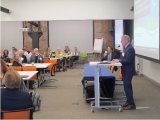
February 2020 - Coming soon to your town - Southeast New England Program's SNEP Network. Check out how it can benefit NGOs, Tribes, and Municipalities.
Do you live in a community that struggles to finance water quality improvements? Have you looked for ways to bolster resilience to storms and reduce frequent flooding? Are you happy with your town's ability to manage environmental programs? Do you worry about the loss of the special places that make your town "home"?
You are not alone. Harmful algal blooms, shellfish bed and swimming beach closures, fewer boating and fishing opportunities, and lost aquatic habitats are all shared problems --- problems on track to get much worse and more widespread as our climate changes. Read Southeast New England Program and New England Environmental Finance Center Launch SNEP Network.
Small Sponsor, Big Results: Local Club Takes on Childs River Restoration
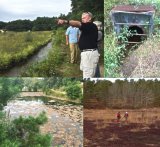
February 2020 - Falmouth Rod & Gun Club—a 75-year-old club with a maximum of 300 members—is spearheading an impressive effort to restore and enhance the upper Childs River. Prior industrial and agricultural use has polluted and choked off the river's flow. A dam now separates the river's upper reaches from Waquoit Bay and a failed fish ladder prevents migratory passage. Both will be removed when the club begins construction to restore habitat, the aim for which is full rehabilitation of the river to a cold-water fishery. Read Small Sponsor, Big Results: Local Club Takes on Childs River Restoration.
Pawtucket's Green & Complete Streets
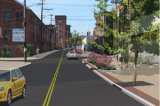
February 2020 - Pawtucket's Green & Complete Streets Project is on track as a local example of the Watershed Grant Program's emphasis on critical partnerships and integrated restoration. Partnering with the Narragansett Bay Commission, the City was awarded upwards of $376,000 to implement green stormwater infrastructure (GSI) as part of a larger transportation effort coordinated with the projected 2021 arrival of a new commuter rail and bus transit hub and the development of a transit-oriented urban district. In addition to the economic benefits expected from the new hub, the installation of the green streets elements will help restore water quality to the Blackstone River and Narragansett Bay. Read Pawtucket's Green & Complete Streets.
